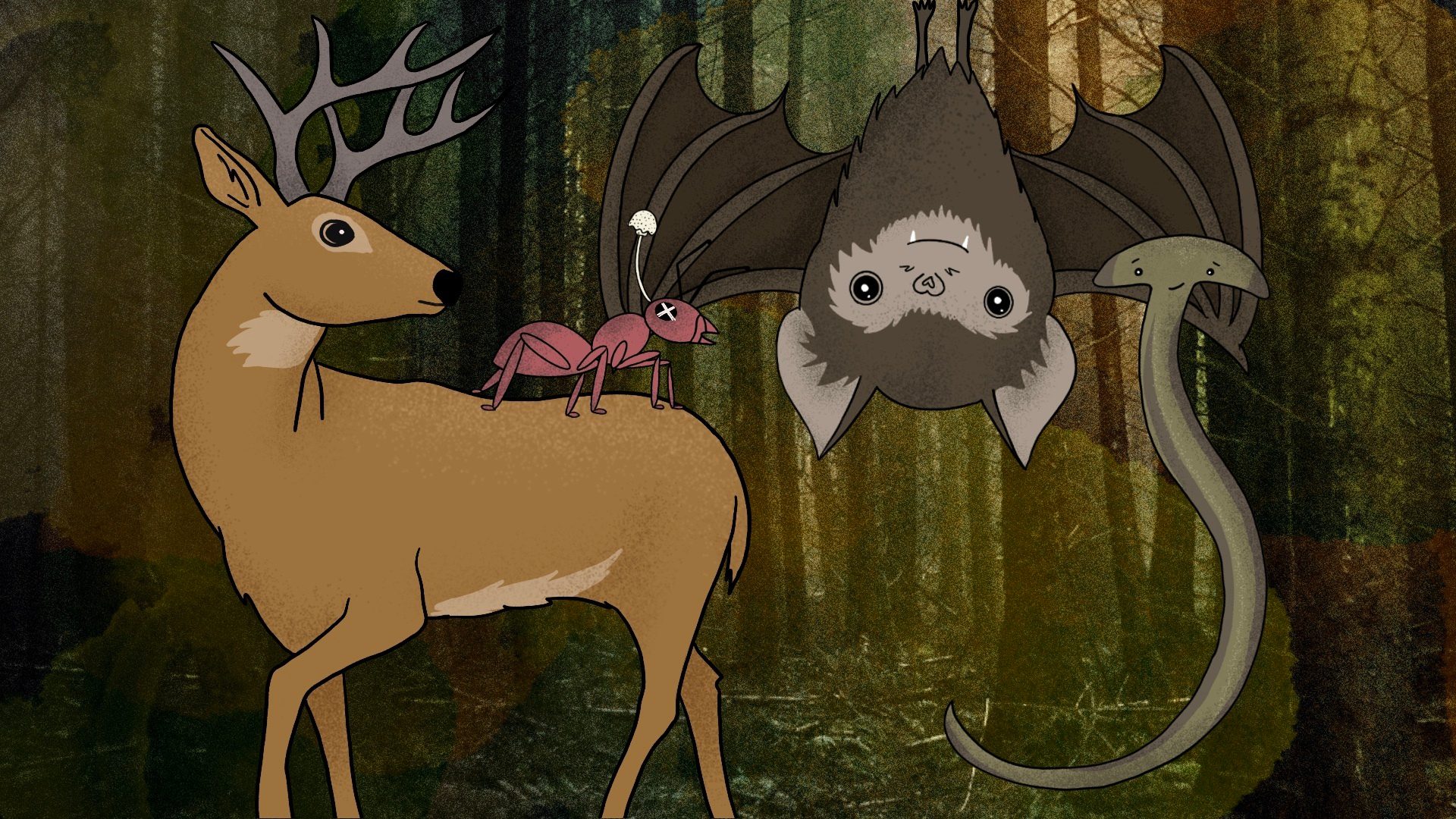- October 30, 2023
- By Kimbra Cutlip
As the sun sets Tuesday, kids and adults alike will don their most ghoulish garb (other than the ones dressing as Barbie or Ken, anyway) in hopes of scaring up a few screams. But nature offers plenty of real-life chills from characters whose likenesses you probably won’t find in costume shops.
Below, University of Maryland scientists help to dig up the real-life monsters haunting local backyards.
Zombies (albeit teensy ones) stalk the DMV
You may have heard of zombie ants, those powerless creatures whose brains are infected with a fungus that forces them to climb to the top of a leaf and swing in the wind so the fungus can spread its spores to the next victim. They’re found mainly in the tropics, said entomology professor and fungi expert Ray St. Leger—but there is a pathogen with similar mind-control powers altering the behavior of mice all over our region.
The parasite Toxoplasma gondii causes major changes to the brains of mice that lead the critters to scurry perilously close to prowling cats and rats. In fact, pet cats that are allowed to wander outside can pick up the parasite by hunting zombie mice, which make easy targets.
Although few people come down with toxoplasmosis symptoms from interacting with an infected cat, unlucky victims can experience neurological and even psychological problems, and the parasite can be deadly to unborn children. It’s a good reason for people to
keep their cats inside, according to research by environmental science and technology graduate student Daniel Herrera—and not just on Halloween.
A haunting in Maryland (and everywhere else)
No, this isn’t about Bambi’s mother coming back for vengeance. While they’re not ghostly in the supernatural sense, white-tailed deer haunt our neighborhoods … one could be right behind you at this moment.
In a study of deer movements through parks and neighborhoods of Howard County, Md., environmental science and technology Associate Professor Jennifer Mullinax found that deer in suburban environments often bed down and spend the night within 150 feet of homes. People usually don’t notice, and that unseen presence has implications for controlling the ticks that deer carry and the Lyme disease they help to spread, Mullinax’s research indicates.
But for the average suburbanite, it may just solve the problem of who has been doing a terrible job trimming the landscape plants every night while they sleep.
Poisonous worms emerge
From “Beetlejuice” and “Tremors” to both versions of “Dune,” giant, flesh-hungry sandworms have inspired cinematic fear and awe. But here’s a twist that the creators of those creepy crawlies never conjured: poisonous skin.
Mother Nature did go there, however, in the form of a slithering foot-long worm that has been invading local backyards. Even more creepy, if you chop it up, the pieces will grow into new worms, multiplying the horror.
UMD entomologist and Professor Emeritus Mike Raupp says these
hammerhead worms, named for their distinctive shape, secrete the same neurotoxin pufferfish use to paralyze potential predators. Although handling them can cause skin irritation, they’re not a real threat to most people, but curious pets that eat them could be in danger, along with our crucial ecosystem allies like earthworms, slugs and snails.
Legit vampires
Vampires of legend possess a host of bat-like qualities and behaviors, like sporting black, wing-like capes and hanging upside down to sleep in dark corners. But real bats almost never mirror vampire-like traits. As Shannon Browne, a senior lecturer in environmental science and technology explained recently in Maryland Today, only three of the world’s 1,400 bat species survive by drinking animal blood, and those are not found in Maryland.
But that doesn’t mean there aren’t real blood suckers to worry about. Nature’s real vampires—ticks—kill not by draining victims, but by spreading diseases. The most worrisome ones around here are black-legged ticks, which carry a plethora of diseases that can infect humans, pets and livestock. They’re also known to live on every continent but Antarctica, and according to veterinary medicine Professor Utpal Pal’s recent article
in Science Translational Medicine, the threat from these miniscule vampires is a “ticking” time bomb. With climate change increasing their geographic ranges, Pal said it’s urgent for governments and researchers to focus resources on developing vaccines against the pathogens ticks carry—which cause Lyme disease, anaplasmosis, babesiosis, rickettsiosis and tularemia.
And that’s scary in real life.
